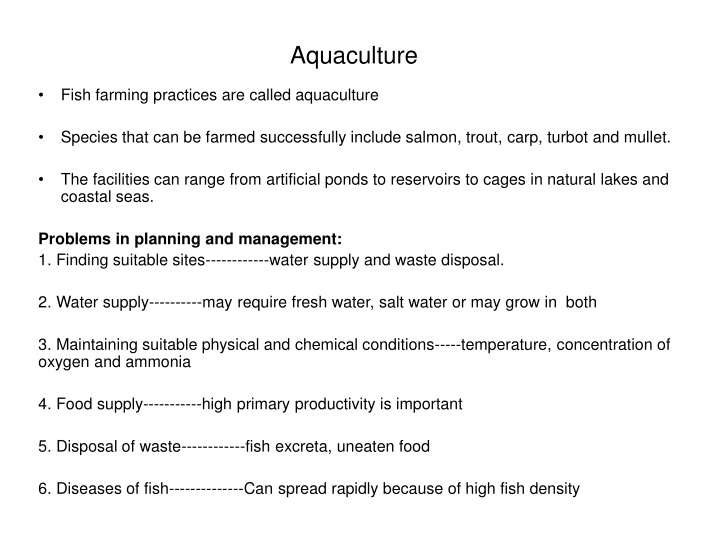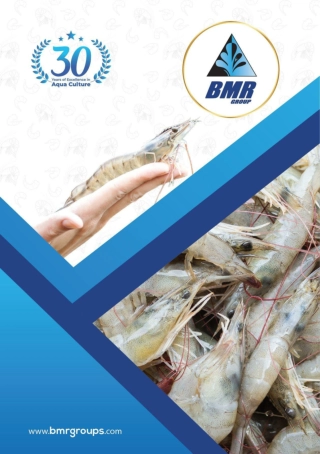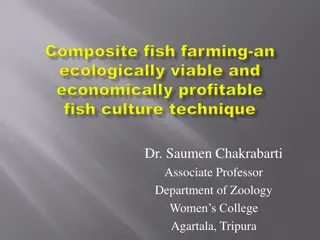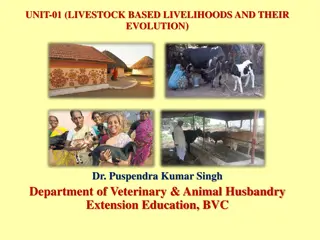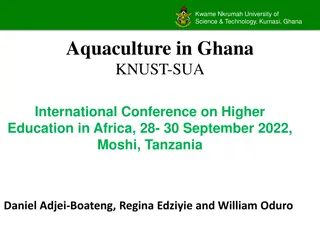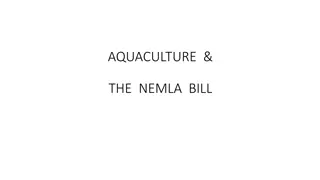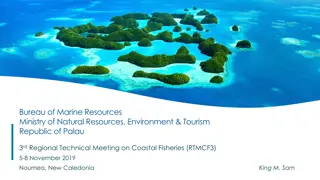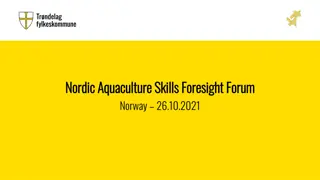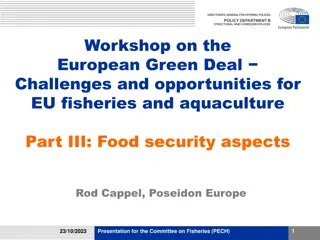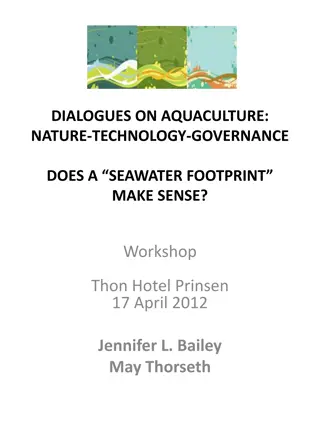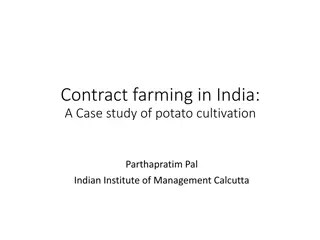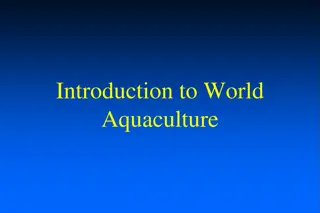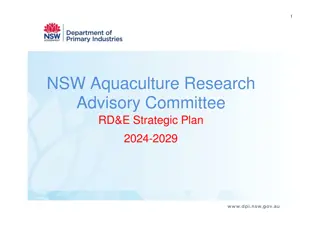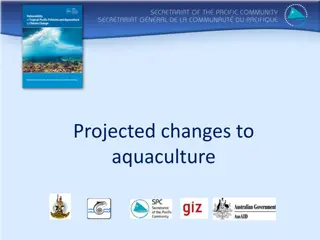Challenges and Future Trends in Aquaculture Farming Practices
Aquaculture, or fish farming, involves farming species like salmon, trout, and carp in various facilities ranging from artificial ponds to coastal cages. Challenges in planning and management include finding suitable sites, maintaining water supply, ensuring proper physical and chemical conditions, providing food supply, and managing waste disposal. The food supply for farmed fish varies for larvae and adults, with extensive aquaculture relying on natural food chains and intensive aquaculture sourcing food externally. The future of aquaculture depends on ensuring sustainable food supply for fish.
Download Presentation

Please find below an Image/Link to download the presentation.
The content on the website is provided AS IS for your information and personal use only. It may not be sold, licensed, or shared on other websites without obtaining consent from the author.If you encounter any issues during the download, it is possible that the publisher has removed the file from their server.
You are allowed to download the files provided on this website for personal or commercial use, subject to the condition that they are used lawfully. All files are the property of their respective owners.
The content on the website is provided AS IS for your information and personal use only. It may not be sold, licensed, or shared on other websites without obtaining consent from the author.
E N D
Presentation Transcript
Aquaculture Fish farming practices are called aquaculture Species that can be farmed successfully include salmon, trout, carp, turbot and mullet. The facilities can range from artificial ponds to reservoirs to cages in natural lakes and coastal seas. Problems in planning and management: 1. Finding suitable sites------------water supply and waste disposal. 2. Water supply----------may require fresh water, salt water or may grow in both 3. Maintaining suitable physical and chemical conditions-----temperature, concentration of oxygen and ammonia 4. Food supply-----------high primary productivity is important 5. Disposal of waste------------fish excreta, uneaten food 6. Diseases of fish--------------Can spread rapidly because of high fish density
Food supply for the farmed fish: Most of the fish species we eat are carnivores. Need to consider food for the larvae as well as the adults. Fish larvae have different food requirements from the adults. Aquaculture can be either extensive or intensive. Extensive Aquaculture: Rely on natural food chains to supply food to the fish. Maintain high primary productivity. Maintain high nutrient status by adding inorganic fertilizer or organic manure. Yields are higher in extensive aquaculture than from natural lakes and oceans. Not because of the fertilizer addition but also because the fish are protected from predators.
Intensive aquaculture All the food for the fish-larvae and adults-is obtained from elsewhere and fed to them. Food for the larvae are zooplankton, small crustacean, microalgae, mixtures of yeast and algae. Adult fish (apart from the few herbivorous species) are usually fed on fishmeal. Fishmeal is made from species that humans do not normally eat, and from parts left over, for example from fish canning factories. Feeds composed of up to 50% plant materials have been recommended for some carnivorous fish. Omnivorous fish can thrive on a diet much higher in plant material, e.g. on about 90% meal from soybean and grain, and only 10% fishmeal.
Conclusion Aquaculture future expansion-------depends on food supply for the fish------ which is one of the major ecological problems. Aquaculture will expand substantially in the future. Not yet possible to predict with confidence whether it will in due course overtake ocean fishing as the major source of fish for human food.
